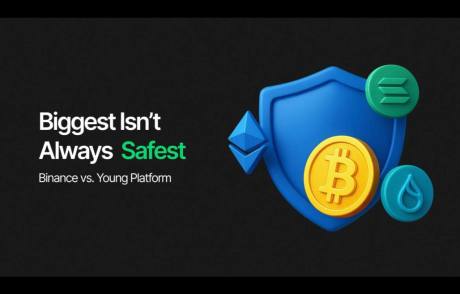Reason to trust

How Our News is Made
Strict editorial policy that focuses on accuracy, relevance, and impartiality
Ad discliamer
Morbi pretium leo et nisl aliquam mollis. Quisque arcu lorem, ultricies quis pellentesque nec, ullamcorper eu odio.
The 65-foot catamaran sits pristine in Mallorca’s harbor, its polished deck reflecting the Mediterranean sun. For 11 months of the year, it remains empty. The owner, a London-based venture capitalist, manages perhaps three weeks aboard annually. Meanwhile, the boat costs $85,000 in maintenance, crew, and docking fees whether anyone steps foot on it or not.
This scene repeats itself across every luxury marina worldwide, representing a $150,000 annual burn rate for private yacht owners who face 40% depreciation over five years regardless of usage. The math is brutal: even fractional ownership programs still cost participants $15,000 annually for limited, inflexible access to vessels they can’t personalize or relocate without unanimous owner approval.
The Cultural Shift Toward Access
Something essential is shifting in how we think about luxury ownership. The pandemic left professionals with excess capital and reduced travel spending, driving 80% increases in fractional investment interest. Fractional ownership exploded across asset classes as regulatory changes in 2015 increased mini-IPO limits to $50 million, making these models legally viable.
Still, while fractional ownership thrived in other luxury sectors, yachting remained behind. Younger generations, encouraged by platforms democratizing everything from art to real estate, increasingly value access over ownership. Time itself has become the ultimate scarce resource, and the smartest players in luxury are figuring out how to make that resource programmable, tradeable, and liquid.
Why Yachting Failed at Fractional
Unlike aviation, where fractional ownership thrives with 830+ aircraft in service, yachting has struggled with fewer than twenty fractional vessels. “It’s a logical business model that gets an illogical reaction from the yachting community,” noted Tankoa CEO Vincenzo Poerio. “A big reason is most yacht owners don’t like to share.”
The resistance goes beyond cultural preferences to structural limitations. Traditional fractional programs lock buyers into rigid calendars, geographic constraints, and shared decision-making nightmares. Even successful companies like SeaNet limit ownership to just four shares per vessel to maintain exclusivity. Swiss company Floating Life’s $500,000 entry point for their 134-foot Ocean Pearl reflects an industry that hasn’t cracked the accessibility code.
The problem isn’t sharing itself, but the inflexibility that comes with it. Traditional fractional buyers face “use it or lose it” time slots, need majority approval for relocating vessels, and can’t monetize unused weeks effectively.
A Smarter Alternative: Tokenizing Time Itself
Fractional ownership had hit its limits. The next evolution wouldn’t come from better timeshares but from rethinking access entirely. One company approaching the problem differently is Mustaa, a platform that doesn’t sell yacht shares but tokenizes time itself. The team was selected for the LUKSO Grants Program, which supports projects building on LUKSO’s blockchain infrastructure for culture, identity, and ownership. The grant provided early-stage funding, mentorship, and technical support for integrating LUKSO’s smart contract standards. It helped fuel speaking opportunities: Mustaa was invited to present at METStrade, the largest trade show in the yachting industry, allowing them to move from prototype to pilot with real-world feedback. By turning access into programmable, tradeable units, Mustaa reframes luxury ownership around flexibility and usability, instead of fractional equity.
“Mustaa was born from a simple observation: beautiful yachts sit empty most of the year while many dream of sailing them,” explains co-founder Marcus May, whose background spans superyacht engineering at Sunseeker and Feadship. “We wanted to change that.”
The mechanics address fractional ownership’s biggest flaws. Investment tranches translate into annual tokens redeemable for yacht time: one week during peak season or two during shoulder periods. Users can stretch tokens across low-demand months for extended trips or consolidate them for high-demand holidays. Can’t use your time? Contribute your tokens to Mustaa’s charter pool and earn yield from rental income.
“Members don’t see the tech and that’s the point,” says co-founder Tom Serres, a serial venture builder whose portfolio includes Nautilus AM and Rally.org. “They just book their trip and go sailing.”
The Infrastructure Behind the Innovation
But behind the simplicity of Mustaa’s booking experience is a purpose-built foundation. It’s not just about better scheduling, it’s about rethinking digital ownership itself. What powers this seamless experience isn’t just smart design, it’s smart infrastructure. Mustaa runs on LUKSO, a Layer-1 blockchain designed not for finance, but for culture, creators, and digital identity. The network is supported by over 100,000 independent validators, which guarantees resilience, neutrality, and decentralization at scale. While Ethereum was built for decentralized finance, LUKSO focuses on ownership, interaction, and digital expression.
LUKSO’s Universal Profiles replace traditional crypto wallets with smart accounts that combine identity, access, and assets into one user-friendly package. Advanced token standards like LSP7 enable gasless transactions. That means users don’t need to touch crypto at all, just book, board, and go.
Smart contracts automate profit distribution from charters, and profile-based access makes sure that only verified users can board. Built-in recovery and permissions systems mean Mustaa can ensure secure, seamless access, no lost keys, no locked-out users, no guesswork.
This is a leap beyond legacy fractional models. Where traditional yacht sharing locks buyers into vessels and regions with $200,000+ buy-ins, Mustaa’s blockchain-native system enables global access to a network of 10,000+ yachts with much lower barriers to entry.
Market Validation and Vision
Mustaa has already secured its first 65-foot catamaran and obtained a charter agency license, concrete steps toward building a functional ecosystem for tokenized yacht access.
Their model appeals to three distinct audiences: almost-owners who want yacht access without ownership burdens, groups pooling resources for annual traditions, and investment-minded users seeking lifestyle perks with returns. “What’s beautiful is how these groups interact,” May observes. “They bring different energy, but share the same love of the sea and smart ownership.”
The vision extends far beyond the water. “Private aircraft is a logical next step,” May notes. “Even space travel is on our radar. It follows a similar historical pattern to yachting.”
The Economics of Programmable Privilege
The implications stretch beyond clever financing into a new category of ownership entirely. Instead of holding slices of a physical object, users hold programmable access to experiences. These rights can be pooled, extended, traded, or monetized based on market demand.
This mirrors the broader evolution of the luxury market. The global luxury yacht segment alone is projected to grow from $9.5 billion in 2025 to $14.58 billion by 2030, driven by a new class of Ultra-High Net Worth Individuals seeking more dynamic, personalized, exclusive experiences.
Mustaa’s innovation is in making the experience the asset. Rather than owning 1/8th of a boat locked to a fixed schedule, users own liquid time, tokenized access that adapts, trades, and generates value.
The Future of Liquid Luxury
Back in Mallorca, the catamaran still sits in harbor. But now, its empty weeks are no longer lost opportunity. They’re tokenized inventory, units of programmable privilege that generate yield and expand access.
This represents more than an improvement in yacht sharing. It’s a fundamental shift in how we define ownership. When time becomes liquid and programmable, access becomes as tradeable as any other asset.
Time, it turns out, was always the real luxury currency. Mustaa and companies like it are simply teaching us how to spend it more intelligently.
Photo by Carles Rabada on Unsplash


















